Related Research Articles
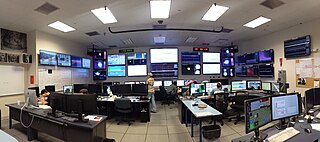
The Laser Interferometer Gravitational-Wave Observatory (LIGO) is a large-scale physics experiment and observatory designed to detect cosmic gravitational waves and to develop gravitational-wave observations as an astronomical tool. Two large observatories were built in the United States with the aim of detecting gravitational waves by laser interferometry. These observatories use mirrors spaced four kilometers apart which are capable of detecting a change of less than one ten-thousandth the charge diameter of a proton.
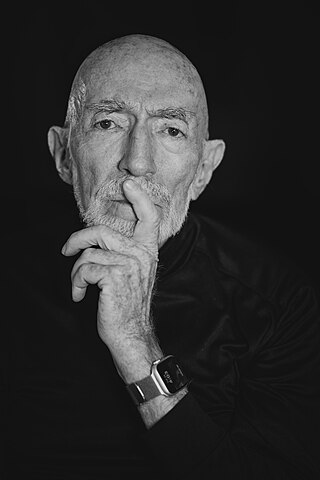
Kip Stephen Thorne is an American theoretical physicist and writer known for his contributions in gravitational physics and astrophysics. Along with Rainer Weiss and Barry C. Barish, he was awarded the 2017 Nobel Prize in Physics for his contributions to the LIGO detector and the observation of gravitational waves.

The Budker Institute of Nuclear Physics (BINP) is one of the major centres of advanced study of nuclear physics in Russia. It is located in the Siberian town Akademgorodok, on Academician Lavrentiev Avenue. The institute was founded by Gersh Budker in 1959. Following his death in 1977, the institute was renamed in honour of Budker.

Joseph Weber was an American physicist. He gave the earliest public lecture on the principles behind the laser and the maser and developed the first gravitational wave detectors.
Alexandru Adalbert "Alex" Marin was an American experimental particle physicist, a professor of physics at MIT, Boston University and Harvard University, and a researcher at CERN and JINR.

Roy F. Schwitters was an American physicist, professor of physics at Harvard, Stanford, and finally the University of Texas at Austin. He was also director of the Superconducting Super Collider between 1989 and 1993.
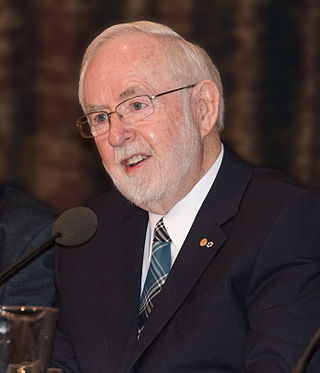
Arthur Bruce McDonald, P.Eng is a Canadian astrophysicist. McDonald is the director of the Sudbury Neutrino Observatory Collaboration and held the Gordon and Patricia Gray Chair in Particle Astrophysics at Queen's University in Kingston, Ontario from 2006 to 2013. He was awarded the 2015 Nobel Prize in Physics jointly with Japanese physicist Takaaki Kajita.

Artem Alikhanian was a Soviet and Armenian physicist, one of the founders and first director of the Yerevan Physics Institute, a correspondent member of the Academy of Sciences of the Soviet Union (1946), academic of the Armenian National Academy of Sciences. With Pyotr Kapitsa, Lev Landau, Igor Kurchatov, Abram Alikhanov and others, he laid the foundations of nuclear physics in the Soviet Union. He is known as the "father of Armenian physics".
Bernard F. Schutz FInstP FLSW is an American and naturalised British physicist. He is well known for his research in Einstein's theory of general relativity, especially for his contributions to the detection of gravitational waves, and for his textbooks. Schutz is a Fellow of the Royal Society and a Member of the US National Academy of Sciences. He is a professor of physics and astronomy at Cardiff University, and was a founding director of the Max Planck Institute for Gravitational Physics in Potsdam, Germany, where he led the Astrophysical Relativity division from 1995 to 2014. Schutz was a founder and principal investigator of the GEO gravitational wave collaboration, which became part of the LIGO Scientific Collaboration (LSC). Schutz was also one of the initiators of the proposal for the space-borne gravitational wave detector LISA, and he coordinated the European planning for its data analysis until the mission was adopted by ESA in 2016. Schutz conceived and in 1998 began publishing from the AEI the online open access (OA) review journal Living Reviews in Relativity, which for many years has been the highest-impact OA journal in the world, as measured by Clarivate.
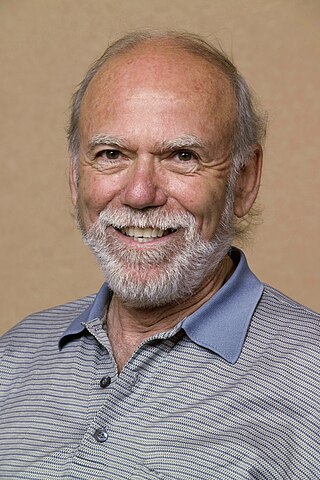
Barry Clark Barish is an American experimental physicist and Nobel Laureate. He is a Linde Professor of Physics, emeritus at California Institute of Technology and a leading expert on gravitational waves.

Paolo Giubellino is an experimental particle physicist working on High-Energy Nuclear Collisions. Currently he is the joint Scientific Managing Director of the Facility for Antiproton and Ion Research (FAIR) and the GSI Helmholtz Centre for Heavy Ion Research (GSI) and Professor at the Institute of Nuclear Physics of the Technische Universität Darmstadt.
Emilio Picasso was an Italian physicist. For most of his career, he served as a researcher at CERN and was project leader for the Large Electron-Positron Collider (LEP), one of the largest particle accelerators ever constructed. Picasso was awarded the Legion of Honour from France and is also bearer of the Knight Grand Cross of the Italian Republic, Italy's highest civilian honor. When he passed, his hometown newspaper called it a moment of mourning for "the international scientific community and for Pisa."

James E. Brau is an American physicist at the University of Oregon (UO) who conducts research on elementary particles and fields. He founded the Oregon experimental high energy physics group in 1988 and served as director of the UO Center for High Energy Physics from 1997 to 2016. Prior to joining the Oregon faculty, he served in the Air Force and held positions at the Stanford Linear Accelerator Center and the University of Tennessee. He is a fellow of both the American Physical Society and also the American Association for the Advancement of Science. In 2006 he was appointed the Philip H. Knight Professor of Natural Science, an endowed professorship.
Francis Louis Halzen is a Belgian particle physicist. He is the Hilldale and Gregory Breit Distinguished Professor at the University of Wisconsin–Madison and Director of its Institute for Elementary Particle Physics. Halzen is the Principal Investigator of the IceCube Neutrino Observatory at the Amundsen–Scott South Pole Station in Antarctica, the world's largest neutrino detector which has been operational since 2010.

]
Paraskevas Andreas Sphicas is a particle physicist who focuses on studies of High energy collisions in the Large Hadron Collider through which he explores supersymmetry and the mechanism of spontaneous symmetry breaking. He is a senior scientist at CERN and professor of physics at the National and Kapodistrian University of Athens. He was elected a Fellow of the Royal Society (FRS) in 2019.
Michel Davier is a French physicist.
Olga Evdokimov is a Russian born professor of physics at the University of Illinois, Chicago (UIC). She is a High Energy Nuclear Physicist, who currently collaborates on two international experiments; the Solenoidal Tracker At RHIC (STAR) experiment at the Relativistic Heavy Ion Collider (RHIC), Brookhaven National Laboratory, Upton, New York and the Compact Muon Solenoid (CMS) experiment at the LHC, CERN, Geneva, Switzerland.
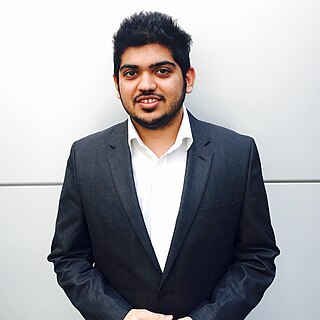
Karan Jani is an Indian astrophysicist working on black holes, gravitational waves, and testing Albert Einstein's General Theory of Relativity. He is currently an assistant professor of physics and astronomy at Vanderbilt University, and holds the endowed position of Cornelius Vanderbilt Dean’s Faculty Fellow. He has worked at the LIGO Livingston Observatory in the US, the Albert Einstein Institute in Germany, the Georgia Institute of Technology, and the Perimeter Institute for Theoretical Physics in Canada. He is a member of the Indian Initiative in Gravitational-wave Observations effort to build a gravitational wave detector LIGO in India.

Rana X. Adhikari is an American experimental physicist. He is a professor of physics at the California Institute of Technology (Caltech) and an associate faculty member of the International Centre for Theoretical Sciences of Tata Institute of Fundamental Research (ICTS-TIFR).
References
- ↑ "Members". umich.edu. Retrieved November 27, 2017.
- 1 2 "Guenakh Mitselmakher". ufl.edu. Retrieved November 27, 2017.
- ↑ "CV" (PDF). cern.ch. Retrieved November 27, 2017.
- ↑ "Gravitational waves detected 100 years after Einstein's prediction". floridatrend.com. February 11, 2016. Retrieved November 27, 2017.
- ↑ "2001". aps.org. Retrieved November 27, 2017.